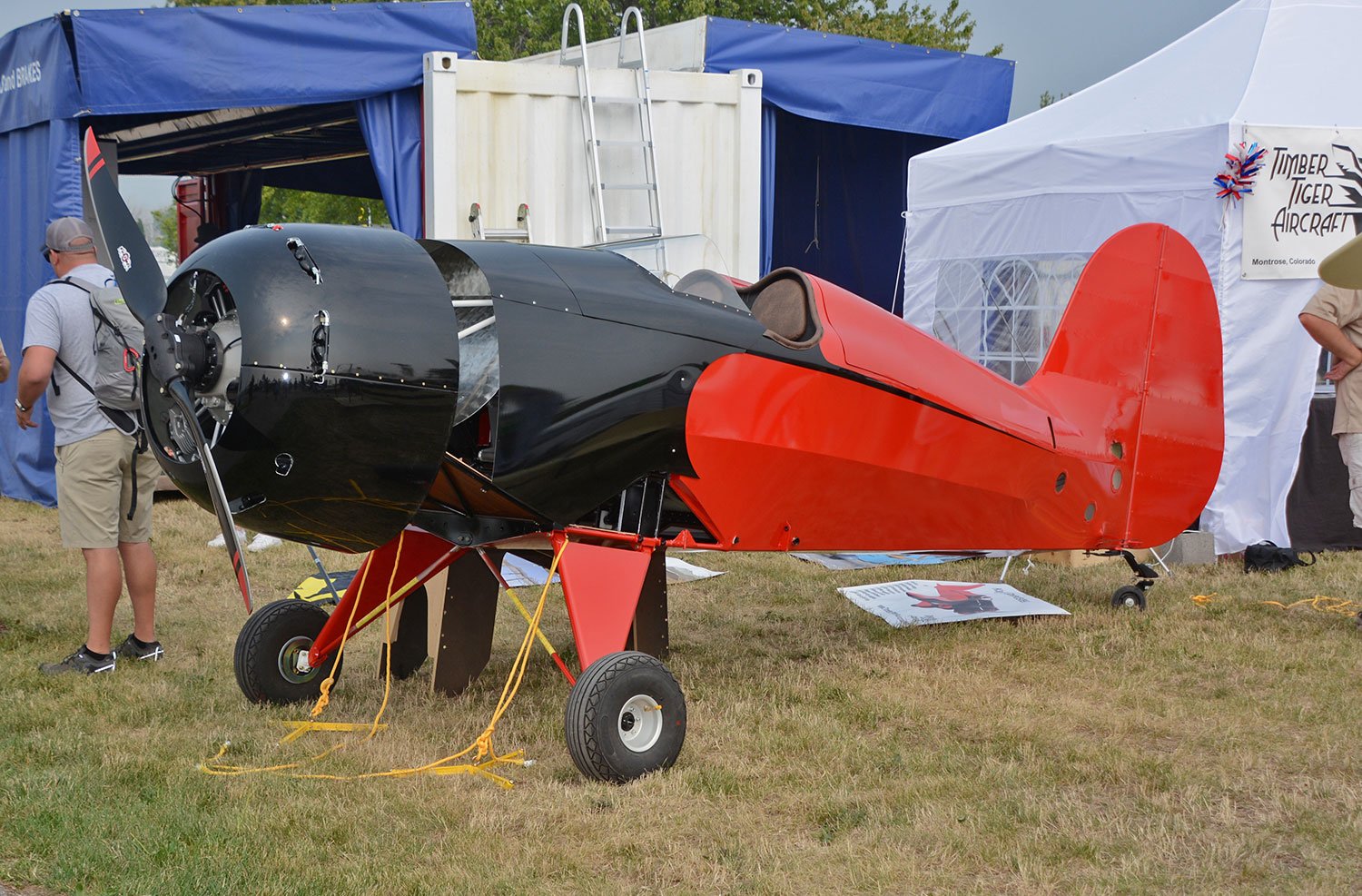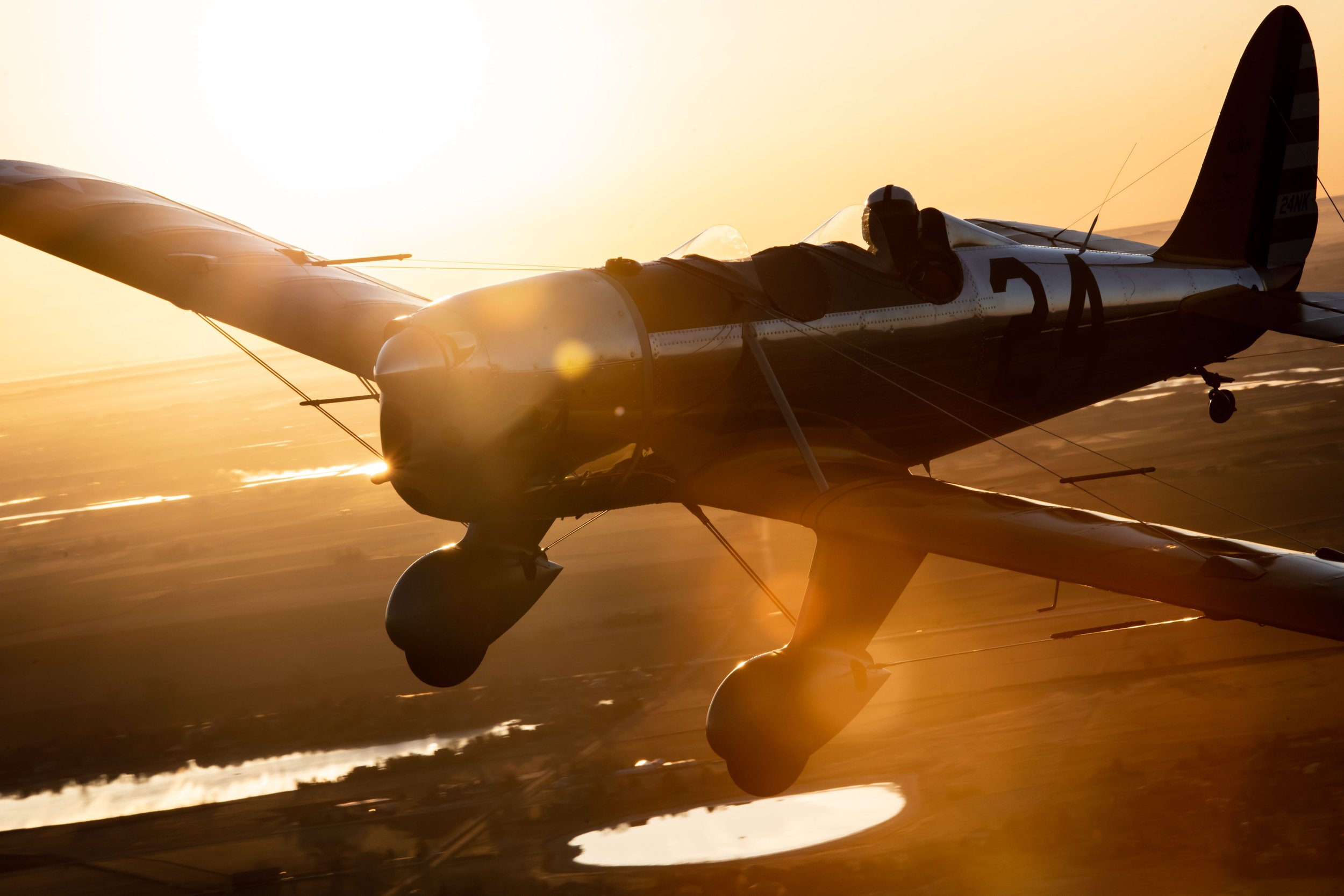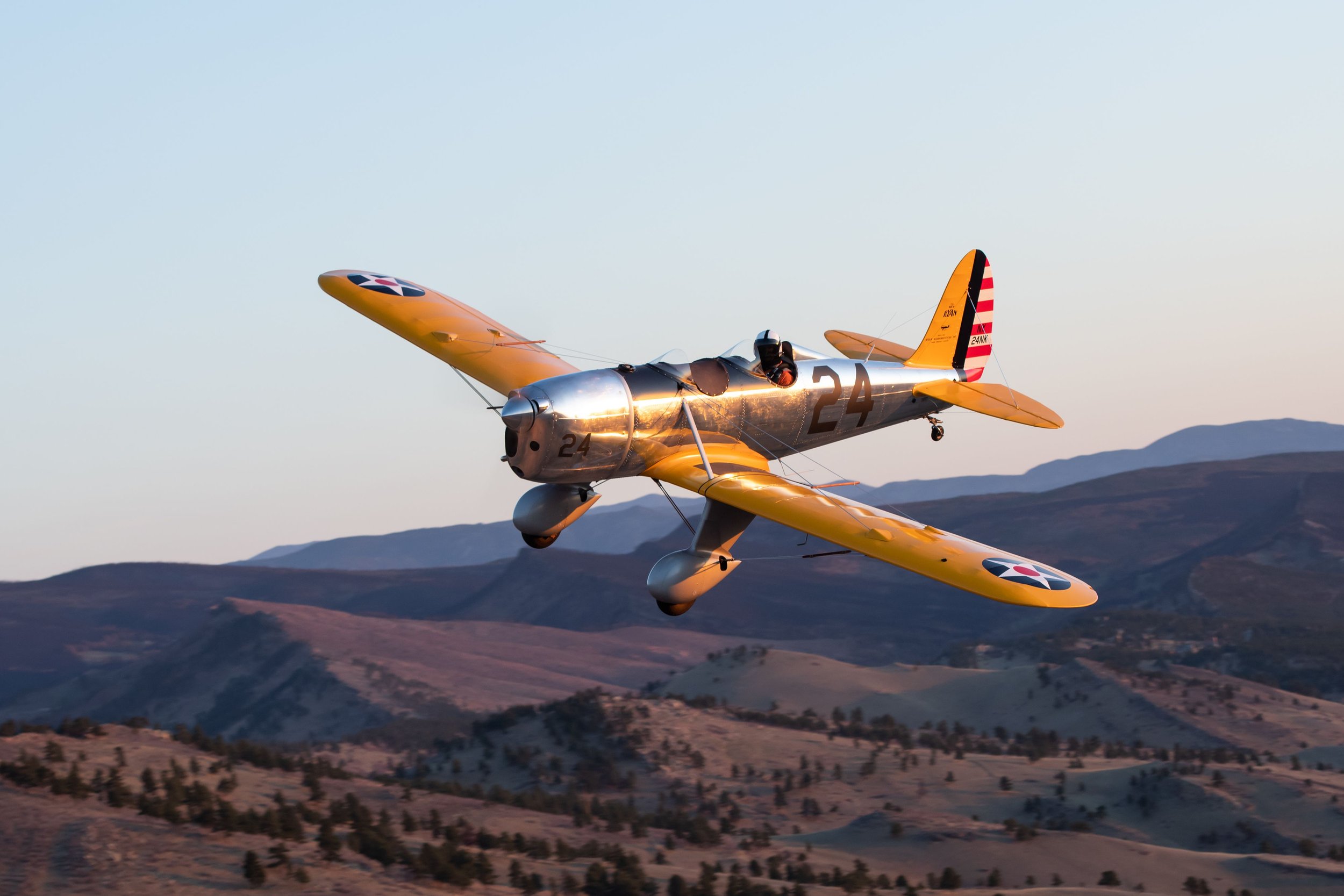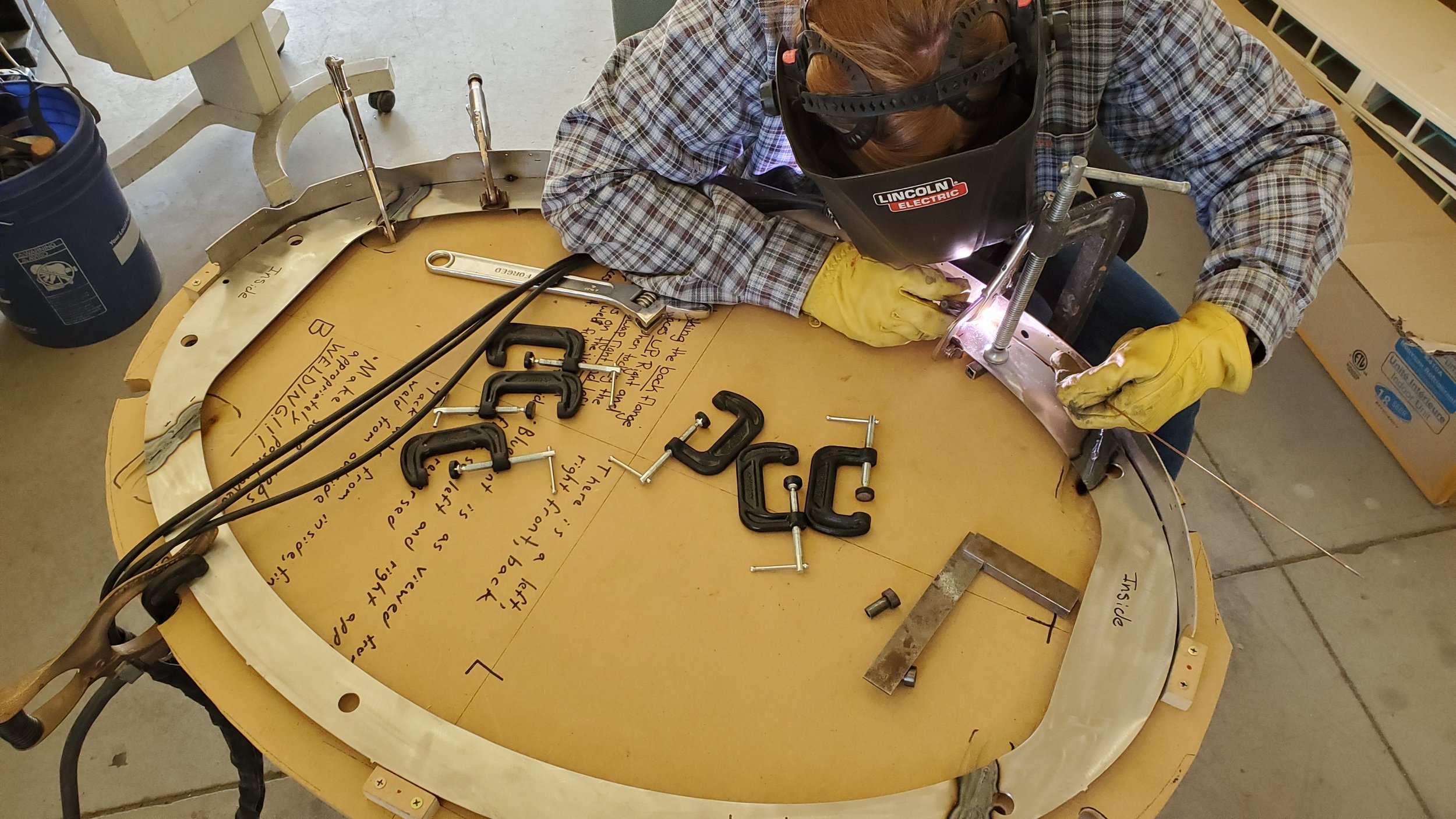
Publications, People, and Company
Watch the best of “Ollie”, the ST-L prototype, in this video that leaves you yearning for more.
Yes, a Rotax can sound amazing.
publications
-

TTA on YouTube
-

TTA FB
-

KITPLANES
-

EAA
-

DAN JOHNSON
-

KITPLANES
-

Flight Review
-

KITPLANES
-

Dan Johnson
-

Kitplanes
-

eaa
-

eaa
-

flyer

PILOT STORIES
LEE WOLFORD, COL USAF RET.
In March of 2021 I came across an article in an aviation magazine about Timber Tiger Aircraft in Montrose, Colorado building replicas of the Ryan ST-A. Since I had owned a PT-22 and always thought about acquiring another Ryan, this article piqued my interest. Would this company build a PT-22 replica kit for me? In late March of 2021 I contacted Timber Tiger Aircraft to see if they might be interested in my idea. Nick Pfannenstiel, the company owner, answered the phone and was very enthusiastic about the idea. The military PT-22 is a very different airframe from the sportsman's Ryan ST, so we elected to replicate the radial-powered PT-16A. We entered into a contract on April 8, 2021 to build the PT-16A replica using the same airframe as his ST-A. Since then, we have worked together on the changes needed for this specific project. I must say Nick is very knowledgeable and easy to work with. For me it has been a pleasure to work with someone with the enthusiasm and knowledge to make this idea come to fruition. The parts I have received so far are extremely well made and display the best workmanship I have ever seen in a kit airplane. I highly recommend Timber Tiger Aircraft to anyone contemplating building a Kit aircraft.
BROOKS MERSHON
I had the honor of being trusted to conduct the phase 1 testing from first flight onward in the ST-L. I flew over 65 hours in the aircraft, starting with the first flight at Colorado Air and Space Port, working through its relocation to Boulder with performance evaluation, stall testing, CG envelope verification, and eventually happy pleasure flying with passengers in phase II while the plane lived with me at Shiflet Field in western North Carolina near Asheville. The plane handles like a more agile and higher power to weight ratio Cub in the air and lands like a Cub on stilts. Three point landings on grass are easy as can be and yes, I can see much more out of this plane than my Pitts S-1S! Look cool without sweating the landings! I've never walked away from the plane without looking back at it. You feel like a hero wherever you land. The plane is magic; flying artwork without any nasty characteristics to pay for the beauty. Docile handling with very wide CG range owing to the airfoil chosen for the wing gives you sporty handling without the dark corners that sometimes comes with "fun" airplanes. I look forward to flying clipped wing variants being built. My time in the plane has been a tremendously rewarding chapter of my flying career.
KRIS CALDWELL
Who doesn’t love the look of the classic Ryan Aircraft? I had the joy of flying the ST-L out of Shiflet Field’s grass runway in the beautiful mountains of NC. It was a crisp and cool Fall afternoon and the experience of flying this gorgeous and well-behaved aeroplane was one that I won’t forget. I’ve been able to fly over 125 different aircraft types in my career thus far, including a few hours in rather rare Ryan PT-21 Recruit. While bearing similar classic Ryan lines, the Timber Tiger ST-L is much more well-behaved. There are some planes out there that, while fun to fly, require the pilot to be constantly on their toes and have the footwork of Fred Astaire when landing. Thankfully, the Timber Tiger ST-L is not one of them. The experience of flight and the nostalgia of the “Golden age of Aviation” can be truly enjoyed. My only regret was that the experience was over too soon!
FLIGHT REPORT - GLENN GORDON
Aircraft Kit Manufacturer: Timber Tiger Aircraft
Model: ST-L (Prototype)
Serial Number: 22
Engine: Rotax 912 ULS, 100 h.p.
Propeller: Performance Propellers, Wood, pitched for climb
Configuration: Prototype with standard wing.
Pilot Experience: Glenn Gordon, Commercial Airplane Single and Multiengine Land, Instrument Airplane, Glider. Approx 1700 hrs / 700 tailwheel, Approximately 40 hrs in type.
Cutting right to the chase, the ST-L is an absolute joy to fly! Its beautiful aesthetic is only surpassed by the wonderful handling and performance of this definitive art deco design. The exquisite styling and flying characteristics combine to make this airplane the dream of the modern grass-roots aviator!
Starting with the walk-around, the first thing one notices is the overall ramp presence of this aircraft. With the top of the cowling towering at 6'-5", the phrases "scaled replica" or "sport pilot" are the last thing that come to mind. Added details such as precisely scaled rivet lines and some beautifully distressed leather adorning the seats and cockpit coamings, leave the admirer forgetting any notion that they're looking at a kit built, scaled-down replica of the legendary Ryan ST aircraft. The aft pilot seating in the tandem cockpits along with the long nose of the airplane create a lot of distance between you and the propeller. The forward view is limited to about the same as the back seat on most biplanes that I've flown. The fact that the cowling is so narrow actually provides some added angle to the forward view.
Step up on the wing and slide yourself down into the cockpit and you'll quickly notice that it's cozy. If you've ever sat in an original Ryan ST then you would find it incredibly spacious thanks to the greatly improved ergonomics of both cockpits on the Timber Tiger design. At just shy of 6 ft, I'm very comfortable in the airplane and have spent several long cross-country days inside of it. Taller pilots will find themselves comfortable as well due to the ability of the builder to mount the rudder pedals anywhere along the lower longerons.
Startup and taxi are uneventful. The steerable tailwheel provides precise control during taxi and snapping the tailwheel out of the detent makes maneuvering in tight spaces a breeze. Forget the heel/cable operated drum brakes of the original Ryan design. The Timber Tiger ST-L features modern Matco disc brakes which provide predictable and controlled brake response.
Lining the airplane up on the runway for takeoff is easy when you let the long nose of this pretty bird guide the way. Ease in the power and you feel that the rudder steering is immediately effective and authoritative, however requires only minimum input to keep the plane pointed straight down the runway. The tail then can be raised almost immediately and you quickly become aware how much this airplane is yearning to climb towards the heavens. I like to gracefully allow the plane to break free from the runway at when it's ready (around 55 KIAS) rather than a distinct takeoff rotation; pilot's prerogative. I'll note here that my initial flights in this plane were at Boulder, Colorado; solo and with full fuel I was still showing 800 fpm climb at 8000' MSL! A little right rudder and a climb-out at 60 knots will quickly show you that the 100 horsepower Rotax up front provides more than enough power for this airframe.
Level the plane off, throttle back to 5200 on the tach, and I was comfortably cruising at 92 KIAS with the engine sipping 5 GPM. Time to feel out the airplane. Some Dutch rolls quickly gave me a feel for the relationship between the ailerons and the rudder, as well as providing me the opportunity to feel out any adverse yaw tendencies. The ST-L features aileron push-pull tubes rather than the cables found on the original. This serves to ensure that ALL the control forces are light, crisp, and in harmony with each other. Through slow-flight, Dutch rolls, and turns (30°,45°,60° bank angle), I quickly appreciated the thought that went into the (re)design of the ST-L's wing. They responded and felt very similar to a Decathlon (slightly lighter control forces) and didn't require any fancy footwork to keep coordinated. Thanks to the washout added to the ST-L's wing design, the ailerons remain effective right up to the stall break. Stalls were straight-ahead, gentle, and very predictable without any tendency to drop a wing. Holding the stick back and practicing a falling leaf is as easy as on any plane I have flown. A release of back pressure immediately gets the wing flying again.
Coming back into the pattern at 1000'AGL with a power reduction to idle will generally leave you high on final. This airplane has a light wing loading and will glide a long way. Those gear leg fairings however do produce a lot of drag during a side slip, and any excess altitude is easy to shed on final. The aircraft's long nose helps you out with runway alignment during landing. I practiced both three-point and wheel landings on both pavement and sod runways. I finally settled on wheel landings for pavement and high crosswinds, and three-point landings for sod. Flying through Nebraska, I landed the plane in winds gusting to 35 knots with a maximum crosswind component of about 12 knots. The ST-L handles these conditions just fine with good responsiveness and proper crosswind technique. It should be noted that on a wheel landing, the tail takes a long time to come down due to the light wing loading. During this time, the ailerons are still very effective and full aileron deflection for crosswind control will lift a wing back into the air. Supposedly this is just like the original Ryan ST handles. Don't try to rush the tail to the ground or you'll quickly find yourself back in the air with no reserve lift. As fine a reputation as the original Ryan ST has, it still had its quirks caused by the inherently unstable leading-link landing gear. Luckily Timber Tiger did away with this design without compromising the gear's outward appearance. The gear leg fairings now hide a new landing gear design which always tracks straight and true.
Some final items about the Timber Tiger ST-L prototype I flew versus the kits which were based upon it. Several improvements were made to the design based upon learnings from the prototype. These changes have been cut into every ST-L kit produced by Timber Tiger. The major improvements include:
1. Wing fuel tanks in place of the original style nose tank:
Increased fuel capacity
Removes fuel from cockpit
More baggage room
More passenger room
Easier to fuel
Lower CG
CG Shifts forward with fuel burn
2. Lowered seats and increased windscreen height for a more scale appearance:
Accommodates taller pilots
More vertical space for cushions or parachute
More scale appearance
Ability to sit lower into the airplane if desired

Customer Stories
Meet some of the folks who are currently building their own very own Timber Tiger Aircraft kits.
Glenn
As a teenager building RC airplanes from balsa wood, I first saw the Ryan ST-A in the SIG model catalog. It wasn't until I saw the real thing at Oshkosh in 2016 did I truly fall in love with the plane. I had restored, rebuilt, and kit-built full size airplanes so I figured (naively) that I would find myself a Ryan ST-A project to restore. Upon a reality check of their scarcity, I started to consider a scratch build before I found Nick Phannensteil who had just begun construction of the Timber Tiger replica Ryan. I volunteered my design, CAD, and manufacturing knowledge to the project knowing that it would get me into the cockpit of a Ryan that much sooner. Last year I had the pleasure of flying the Timber Tiger prototype ST-L into AirVenture. I am currently finishing building out my workshop in my new airpark home so that I can begin building a Timber Tiger ST-L of my own. My builder’s log is online at this link.
Greg
50 years ago I received a Cox Ryan as a birthday gift. That gift started my love affair with the Ryan STA. I would spend hours looking at the model and dreaming of flying a full scale Ryan. Growing up I always had an eye for the STA. The more I studied the design and history of the ST the more I liked it. When Timber Tiger introduced their Ryan, I contacted Nick Pfannenstiel and began asking questions. A year and a half later Nick announced the availability of the kit and the successful flight of the prototype, I put my order in for a kit, and scheduled a flight in the prototype. I found the Ryan to be light on the controls and well harmonized, just as I hoped it would be. This will be my go to airplane for those summer evening flights around the Indiana countryside.




